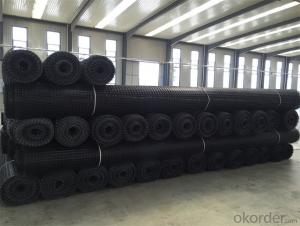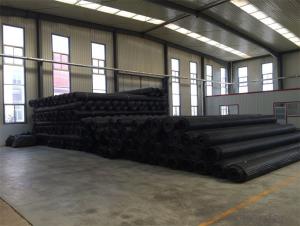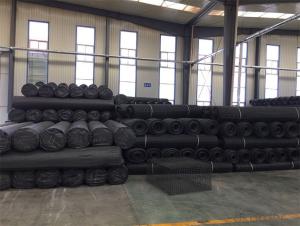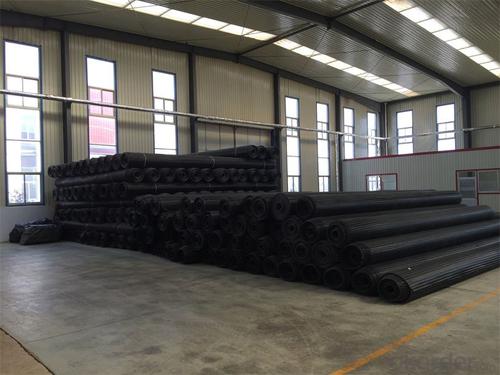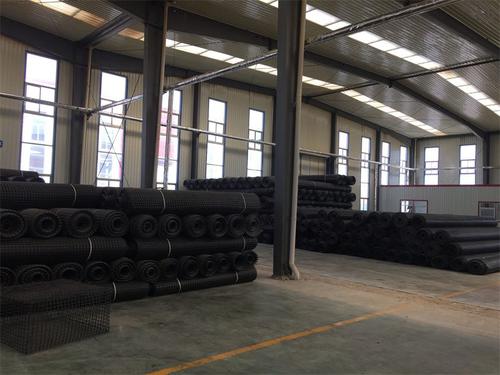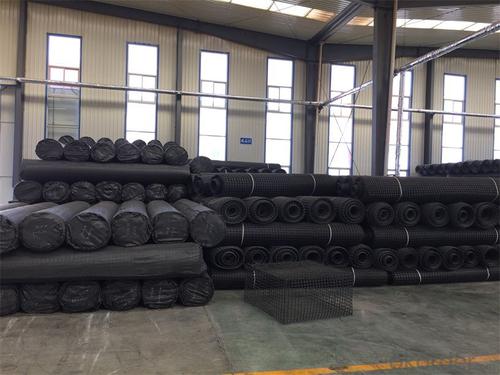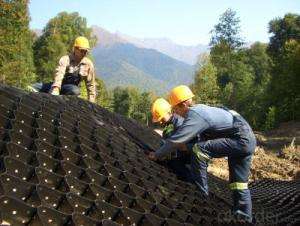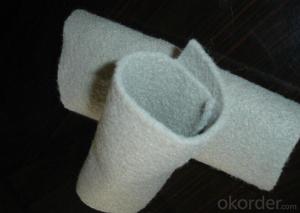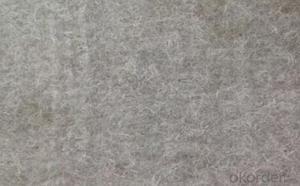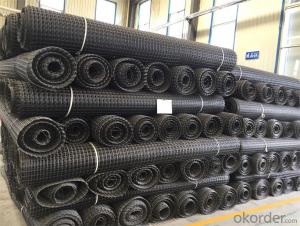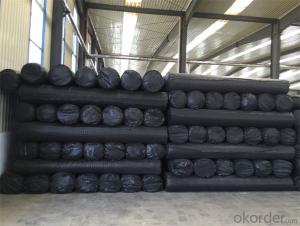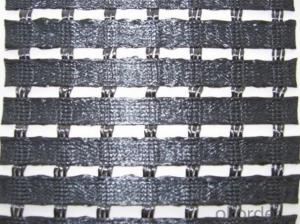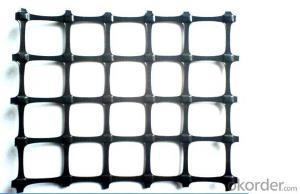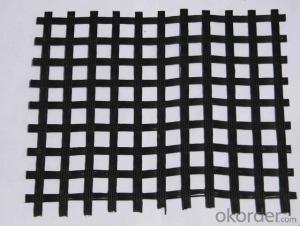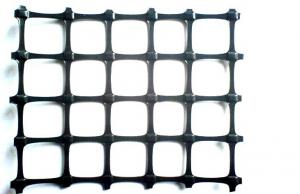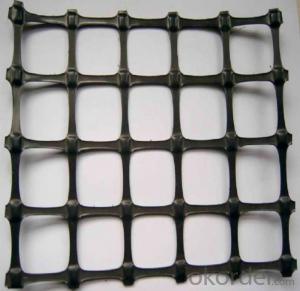Geoweb Geocells Plastic Geogrid with High Tensile Strength Warp Knitted Cmax Brand
- Loading Port:
- Tianjin
- Payment Terms:
- TT OR LC
- Min Order Qty:
- 20000 m²
- Supply Capability:
- 50000000 m²/month
OKorder Service Pledge
OKorder Financial Service
You Might Also Like
Fiberglass Geogrid Introduction:
Fiberglass geogrid is a kind of planar mesh material using alkali-free fiberglass yarn as base body and then coated with high quality modified asphalt. It is warp knitted with oriental structure which gives full play of yarn strength and improves its mechanical property to make the product high tensile, tearing and creep-resistant. Moreover, the composite property of coating with asphalt makes full protection of the fiberglass matrix and greatly improves its wear and shear resistance. All the advantageous functions make the product have a good performance in pavement strengthening, track cracking and solving difficulties of strengthening the bituminous pavement.
Fiberglass Geogrid Features:
1. Light weight, high tensile strength, high modulus, low elongation and good toughness.
2. Corrosion resistance, no long-term creep, long life span.
3. Good physical and chemical stability and good thermal stability.
4. Resistant to fatigue cracking, high-temperature track and low temperature shrinkage cracking.
5. Delaying and decreasing crack reflection.
Specifications | PET20-20 | PET30-30 | PET40-40 | PET50-50 | PET80-80 | PET100-100 | PET120-120 |
Elongation(%) | 10%~15% | ||||||
Vert Tensile strength(KN/m) | 20 | 30 | 40 | 50 | 80 | 100 | 120 |
Horiz Tensile strength(KN/m) | 20 | 30 | 40 | 50 | 80 | 100 | 120 |
Grid(mm) | 12.5×12.5 20×20 24.5×24.5 | ||||||
Width(m) | 1—6 | ||||||
Fiberglass Geogrid Application:
1. Road surface asphalt overlay construction engineering; Asphalt layers
reinforcement.
2. Converting old cement concrete road into composite road; Restraining
reflection cracking caused by block shrinkage.
3. Road extension; Preventing and controlling the cracking caused by new
and old combination and uneven settlement.
4. Treatment of the conjunction between tunnel and bridge or foundation.
Packaging & Shipping:
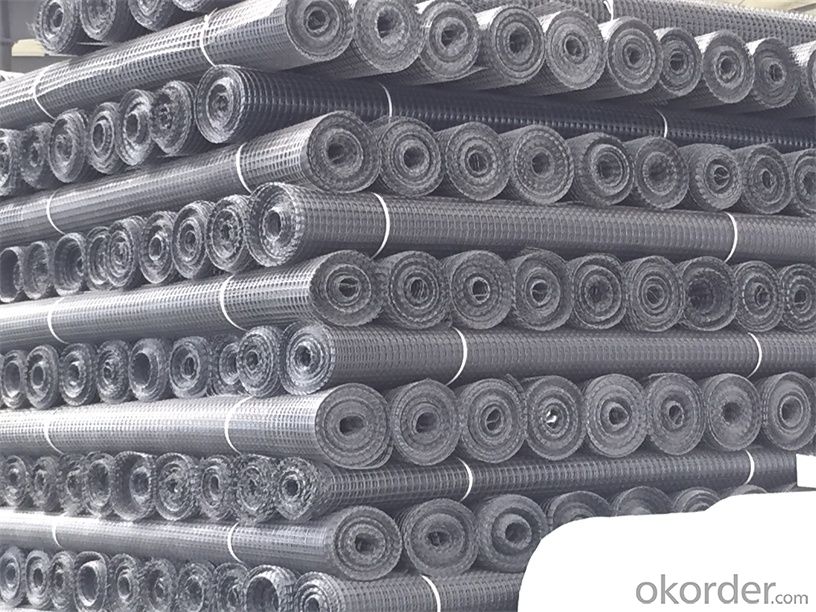
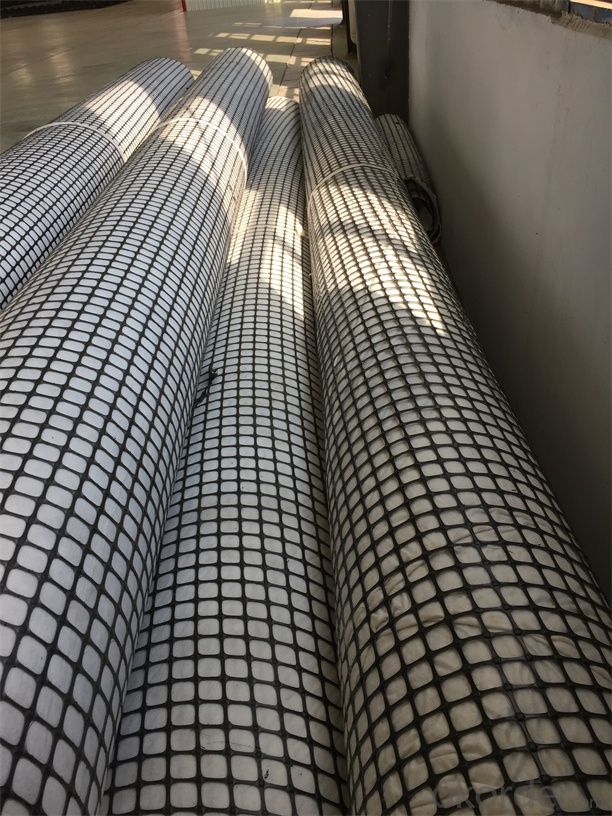
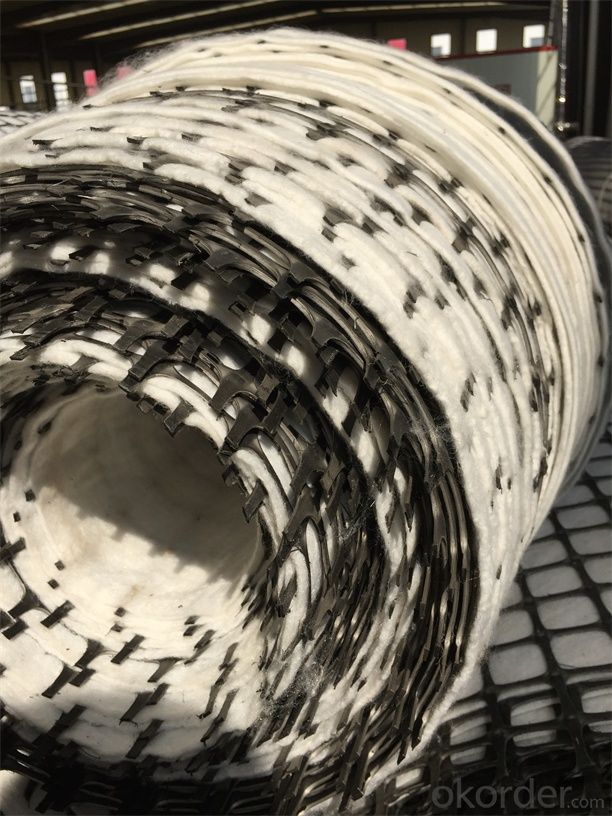

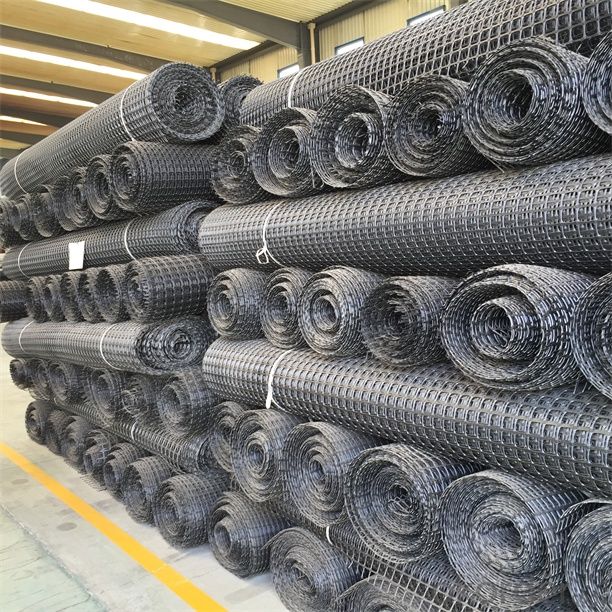
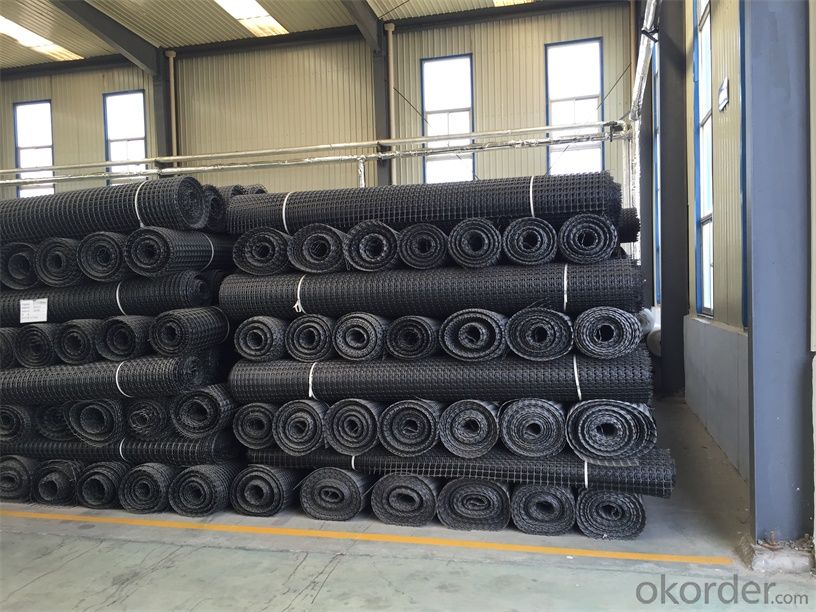


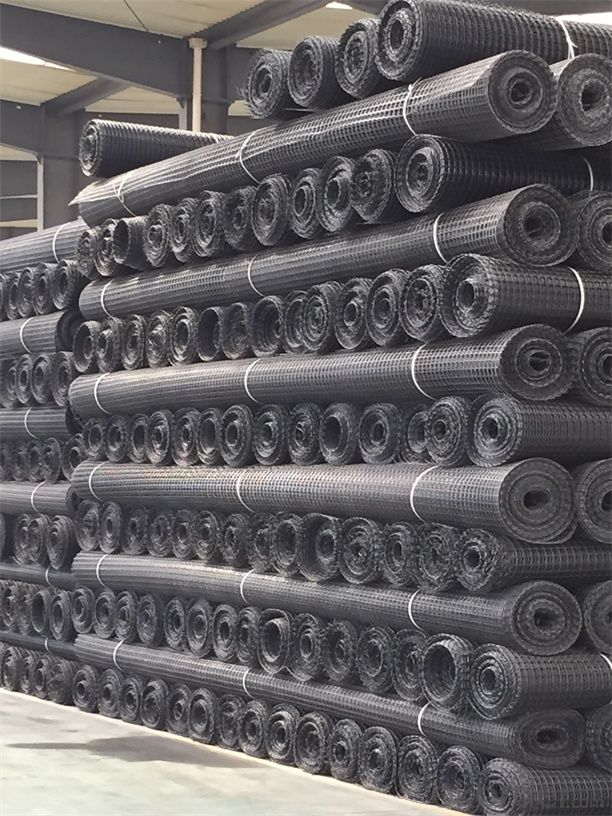
FAQ:
1. How to order your geogrid ?
a) Tensile strength in warp & weft direction
b) Grid size
c) Roll Width and length
d) Quantity
2. What is the Payment term?
a) TT
b) LC AT SIGHT
c) cash
d) 30% contact value as deposit ,the blance 70% be paid after received the copy of bl .
3. Delivery time
a) 19-25 days after received your depsit .
4. What is MQQ ?
a) 2500 m2 as MQQ , we can also produce sample for you .
Welcome to send your inquiry to us, and if you have any question, we can also help you.
- Q: Are geogrids suitable for use in vegetated slopes?
- Yes, geogrids are suitable for use in vegetated slopes. Geogrids provide reinforcement to the soil, helping to prevent erosion and improve stability in sloped areas. The open structure of geogrids allows for vegetation to grow through, promoting the establishment of plants and enhancing the overall aesthetics of the slope. Additionally, geogrids can help to distribute the load and reduce the stresses on the soil, thereby increasing the lifespan of the vegetated slope.
- Q: Geogrid standard geogrid price geogrid role
- Geogrid is a kind of main geosynthetics, which has unique properties and effects compared with other geosynthetics. Geogrid is often used as reinforcement of reinforced soil structure or composite material. Geogrid is divided into four categories: plastic geogrid, steel plastic geogrid, fiberglass geogrid and fiberglass polyester geogrid. Geogrid is a kind of main geosynthetics, which has unique properties and effects compared with other geosynthetics. Geogrid is often used as reinforcement of reinforced soil structure or composite material. Geogrid is divided into four categories: plastic geogrid, steel plastic geogrid, fiberglass geogrid and fiberglass polyester geogrid.
- Q: Can geogrids be used in reinforcement of railway ballasts?
- Yes, geogrids can be used in the reinforcement of railway ballasts. Geogrids are commonly used to enhance the stability and load-bearing capacity of ballast layers in railway tracks. They help to distribute the load more evenly, reduce settlement and deformation, and improve overall performance and longevity of the ballast.
- Q: Can geogrids be used in retaining walls for waterfront applications?
- Yes, geogrids can be used in retaining walls for waterfront applications. Geogrids are commonly used in such applications to reinforce and stabilize the soil behind the retaining wall, providing additional strength and preventing potential erosion or failure.
- Q: Unidirectional tensile plastic geogrid manufacturers which good
- The utility model is punched on the extruded polymer plate (raw material is polypropylene or high-density polyethylene), and then directionally stretched under the heating condition
- Q: What are the benefits of using geogrids in roadways?
- The benefits of using geogrids in roadways include improved load-bearing capacity, reduced pavement thickness, increased stability and durability, prevention of cracking and rutting, enhanced drainage and erosion control, and cost savings in construction and maintenance.
- Q: What is the recommended geogrid aperture size?
- The recommended geogrid aperture size depends on various factors such as the type of soil and the intended application. It is best to consult with a geotechnical engineer or refer to specific industry standards and guidelines to determine the appropriate geogrid aperture size for a given project.
- Q: Are geogrids effective in reducing differential settlement?
- Yes, geogrids are effective in reducing differential settlement. Geogrids are engineered materials that provide reinforcement and stabilization to soil. By distributing loads more evenly and improving soil strength, geogrids help mitigate differential settlement, which occurs when different areas of soil settle at different rates.
- Q: Can geogrids be used in shoreline protection against wave action?
- Yes, geogrids can be used in shoreline protection against wave action. Geogrids are synthetic materials that provide reinforcement and stabilization to soil and are commonly used in various civil engineering applications, including coastal protection. They can be used to enhance the stability of shorelines by preventing erosion and reducing the impact of wave action.
- Q: How to do this in the geogrid in the retaining wall? Is there any remedy?
- High tensile strength and low elongation glass fiber geogrid is a glass fiber as raw material, has a high resistance to deformation, the elongation rate is less than 3%.
Send your message to us
Geoweb Geocells Plastic Geogrid with High Tensile Strength Warp Knitted Cmax Brand
- Loading Port:
- Tianjin
- Payment Terms:
- TT OR LC
- Min Order Qty:
- 20000 m²
- Supply Capability:
- 50000000 m²/month
OKorder Service Pledge
OKorder Financial Service
Similar products
Hot products
Hot Searches
Related keywords
